
Building Community: the Workman way
At Workman, we are committed to creating an outstanding customer experience for occupiers and our Building Community campaign showcases the benefits that this commitment to the occupier experience can have.
A sense of place and togetherness creates community within buildings. This ethos has informed the development of our occupier engagement initiatives, which aim to bring people together across commercial property.
By raising the standard of occupier engagement, our property management style and creative approach deliver services that make Workman-managed properties much more than simply a desk and a chair.
Today’s commercial property must offer stimulating, social environments that support employees’ and customers’ physical and mental wellbeing in an environmentally responsible way.
Property management strategies should be designed to create communities where buildings add value to their end-users’ experience and environment, persuading them that the workplace is once again a thriving hub.
Our Building Community magazine has been produced to highlight the value of, and our expertise in, creating environments where occupiers want to stay. In it, we consider;
- the role of technology in creating a great occupier experience,
- why regularly seeking occupier feedback is vital, and how best to it with Real Service,
- the role commercial destinations can play in creating positive social impact within their communities,
- some of the most effective ways to build real communities within commercial locations.
Read more about our property management services and how we can build communities here.

In a post-pandemic hybrid-working world, occupiers risk workforces becoming disjointed and isolated, which means building workplace community is even more vital. So how can destination marketing be used to bring people together?
Before the pandemic, destination marketing in the workplace could be aimed at a captive audience – people who were coming to the workplace regardless of the occupier experience. Today, it’s a very different challenge, with fluctuations in the working week and unpredictable numbers of people coming to the workplace on any given day. While there are peaks and troughs – witness the Wednesday uplift and the Friday desert – the regular calendar of events and activities organised by an onsite property team now requires a greater cleverness and creativity than ever before, to appeal to staff that may not have to come to the office.
“We’ve taken a different tack,” says Dina Mistry, Marketing, Communications and Events Manager at Breakspear Park, a Workman-managed business park in Hemel Hempstead set in 16 acres, offering over 300,000 sq. ft of indoor space, with 1,300 employees across multiple international and local companies in a variety of sectors.
“We are no longer planning single-day events because we see a spike for a few hours of uplift in employee engagement, and then the event is over. Our focus is now on growing our community back over a sustained period, with events and activities running over longer phases, and culminating in the download of our new app,” explains Dina.
Pre-pandemic, the site had a very strong following in terms of the base of people that were engaged with its busy #ParkLife enlivenment agenda where the plethora of #ParkLife events have included an Ice Bar, Halloween Pumpkin Picking, and a Silent Cinema, all communicated via subscription to email newsletters and a closed Facebook group. The pumpkin event generated positive regional PR and increased the site’s closed Facebook group sign-up rating.
However, the post-pandemic number of employees engaged via email or the Facebook group have reduced to 60% of the usual figure due to factors such as a turnover of occupier staff, and new companies arriving at the park. The aim of the new app, explains Dina, is to highlight key awareness dates, recycling initiatives, book swaps, and plastic-free ideas, with the key message that “you don’t have to be physically in the office to still feel a part of the Park Life Community at Breakspear Park.”
“The challenge now is to get out there with our #ParkLife campaign and regularly communicate with people so that they can see what we’re doing for them. We’re giving occupiers’ employees things to do that their direct employer cannot offer, including freebies, central places to be engaged onsite, and encouraging their own wellbeing,” Dina says.
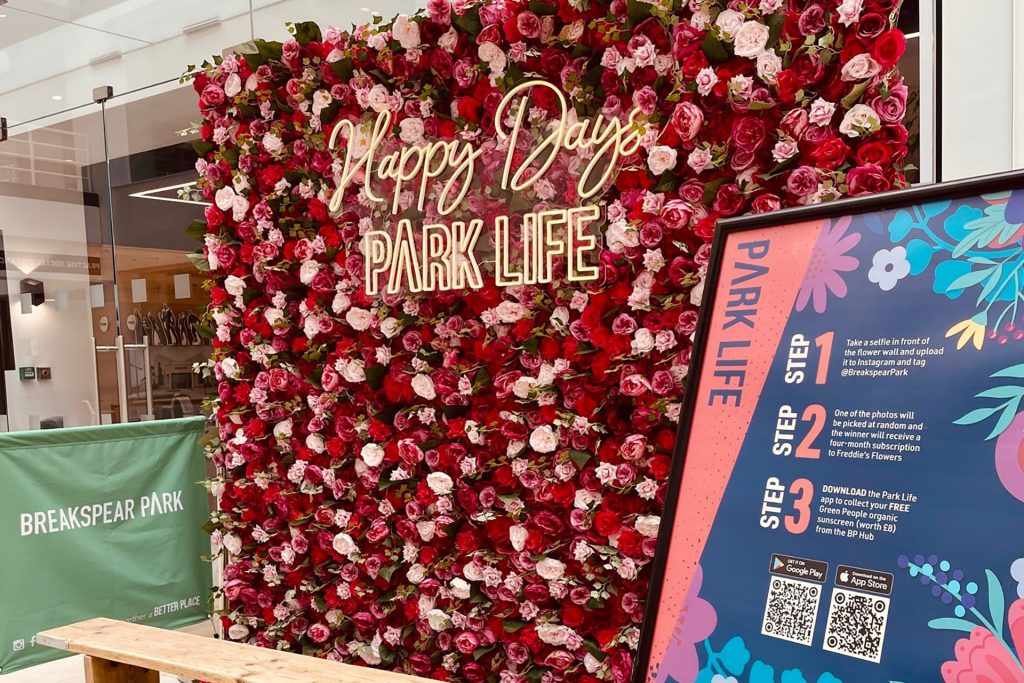
One example is a flower wall activation, onsite for four weeks of July, accompanied by a campaign encouraging occupiers’ employees to take a selfie, upload it to Instagram, and tag #BreakspearPark for a chance to win a four-month subscription to Freddie’s Flowers. In addition, a free Green People organic sunscreen is on offer via QR code to those who download the new Breakspear Park App. The event is designed to encourage engagement with other staff members, to make people smile, capture a moment with colleagues, and bring that feeling of togetherness back again post-pandemic.
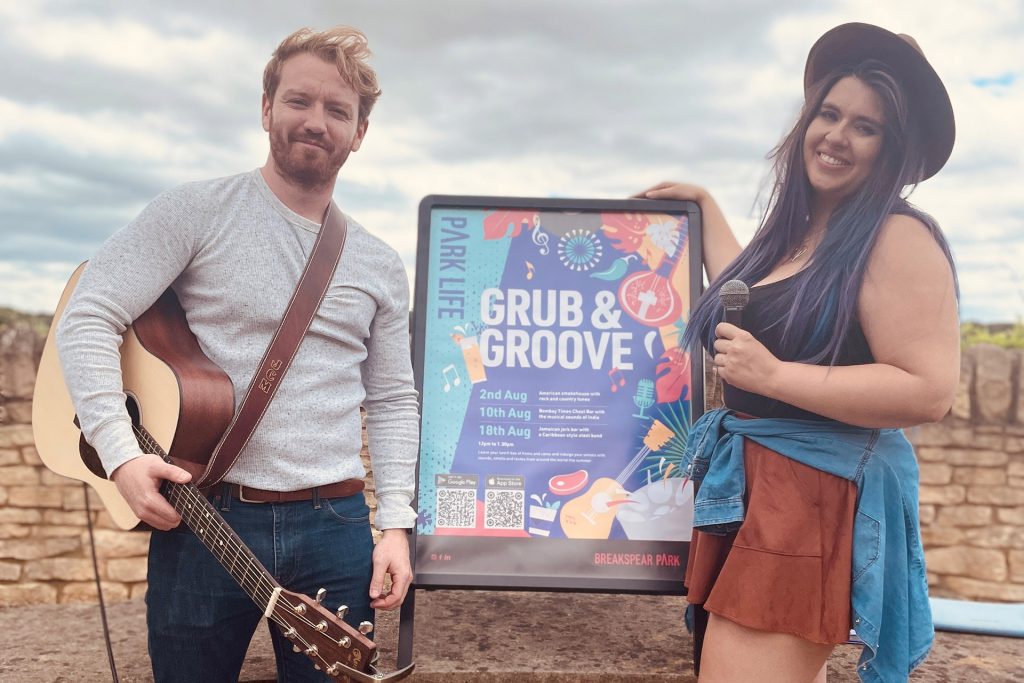
And during August, the onsite team organised an internationally themed event featuring live music from a Caribbean-style steel band, American Country music, and Indian music, along with outdoor food pop-ups. The event made use of the site’s 16-acre gardens and ran for three days – a Tuesday, Wednesday and Thursday staggered over three weeks to enable people who may be away during August to take part.
“Our goal is that people coming to work here feel that they are part of the community, which is #Park Life, so this summer campaign is an opportunity to network and meet people. The #ParkLife agenda means that Breakspear Park is not just a workplace; it’s a place where the community is formed, and everyone plays a part in its success,” Dina says.
While business parks are not often in the most convenient city centre locations, the culture of wellbeing, lifestyle opportunities, leisure provision and collaboration opportunities with other occupiers speaks of an increasing awareness from properties owners as to the kind of strategies their onsite property management teams should be offering. The best onsite property management teams create inclusive, supportive work environments, unifying the commercial goals of the landlord with the realisation of a better work-life balance for individuals through the range of activities on offer for those onsite.
As Andrew Sparrow, Director of Placemaking in Workman’s Activate team explains: “We are aiming to achieve asset management objectives by increasing occupier satisfaction and retention levels. There is a competitive market in terms of where businesses now take space, so occupiers will question the added value of each site, and what they and their employees stand to gain from it in terms of community and wellbeing.”
The #ParkLife concept at Breakspear Park, launched by Dina and the team in 2018, has grown from infancy into a value-adding proposition that helps the site stand out from competitor workspace solutions for its heightened employee benefits and wellbeing solutions.
Entertainment is combined with the realisation of a better work-life balance for individuals through a range of regular activities, such as a health screening programme and fitness studio classes, creating inclusive, supportive working communities, in unison with the commercial goals of the property. For example, the #ParkLife programme has included events around National Relaxation Week, offering up to 800 30-minute massages to employees on-site, as well as a Health Screenings Programme, including free Diabetes Screening, that serves as an effective employee benefit and wellbeing option.
There is also a desire for business parks to reach out to the communities around them; to work with schools, charities, community groups and the local council to generate routes into employment at the site. “It’s about connecting people and building pathways within the community,” says Andrew. “We call it destination marketing, but what we are doing is unifying the goals of the asset with the goals of the occupiers and their employees.”
Read more about our approach to Building Community across our managed portfolio.

Across the Workman-managed portfolio, comprising more than 4,000 properties, our property management teams deliver great occupier experience through strategic engagement programmes and regular communication.
Here we meet some of the experts who lead our work to create a sense of place and community, particularly vital within multi-occupier buildings.
Richard Hart, Head of Property Management, UK and Europe

Having joined the firm through its renowned Graduate Scheme in 2007, Richard became a Partner in 2014. Today he’s responsible for the delivery of the property management service on behalf of both UK and European property funds, private clients, and investors including: LGIM Real Assets, CBRE Investment Management, CapitaLand and Segro. Richard works closely with clients to help maximise asset performance and value through a robust management strategy, with both ESG and customer experience at its core.
In recognising the importance of occupier experience in today’s commercial property spaces, Richard says: “We strive to meet the needs of modern occupiers, by ensuring that all properties in the Workman-managed portfolio offer stimulating, healthy environments that support occupiers’ physical, mental, and social wellbeing in an environmentally responsible way, while creating a sense of place and togetherness within the local community.”
Eleanor Newton, Senior Associate

A highly experienced property manager, Eleanor works closely with several prime office and campus sites within the Workman portfolio, including Westside in Hemel Hempstead and Republic in London. She uses her experience to build partnerships between landlords and occupiers through enhanced property management, focusing on operational excellence, wellbeing, and occupier experience to create environments which support personal and professional demands. Eleanor is also well-versed in the use of smart-tech and occupier-engagement apps to achieve building efficiencies and environmental targets.
Eleanor says: “Occupier engagement holds the key to successful and sustainable property management. Building strong connections with occupiers to drive change in how buildings are occupied is critical in the journey to Net Zero. To manage buildings safely and efficiently, it is more important than ever to understand occupancy patterns. Today, occupiers are looking to their landlords to meet their changing expectations, which landlords and property managers can only be aware of by working closely with them.”
Cassie Iles, Welcome Community Manager
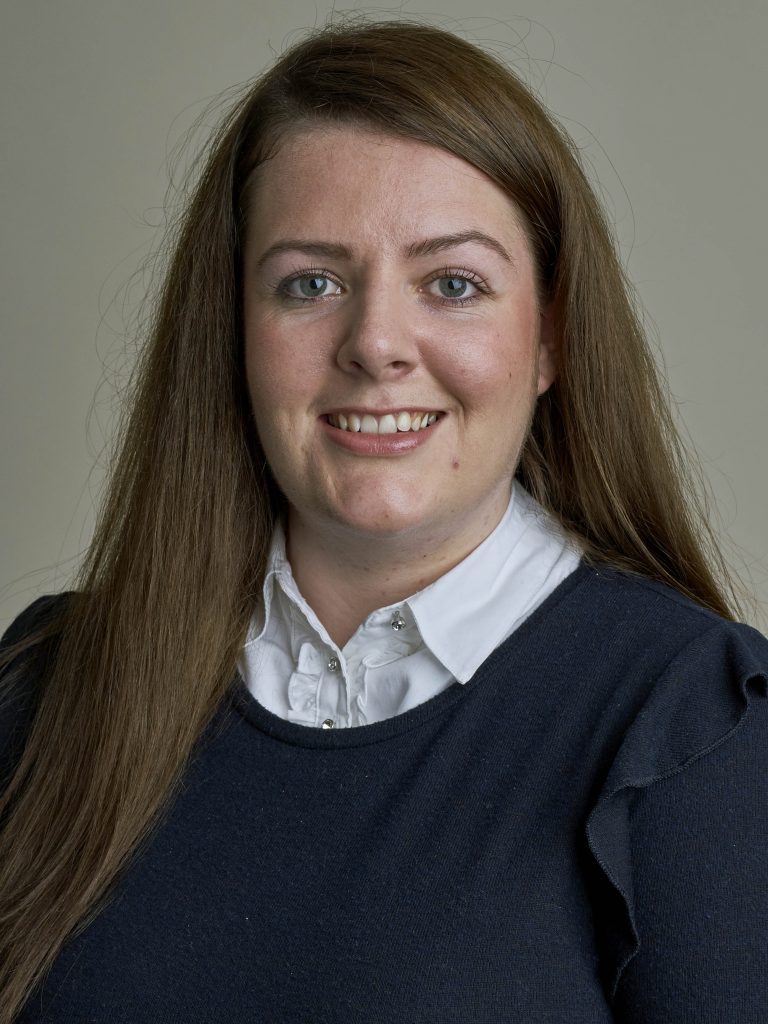
Welcome Community Manager Cassie Iles devises occupier experience and engagement and experience strategies for Workman’s Welcome portfolio. Working within the Welcome team and collaborating closely with all front-of-house personnel, Cassie leads communication and feedback programmes for individual assets and their occupiers, while delivering the highest standards of services, tailored to their needs.
Cassie says: “Our role is all about human connection; understanding exactly what occupiers want. In some buildings, this may be the delivery of a jam-packed programme of lunchtime events or bespoke wellbeing initiatives. In others it may mean collaborating with occupiers to implement social initiatives with the local community; or we may be delivering any combination of these. Our ultimate goal is that occupiers get exactly what they want from their space and service, delivered seamlessly.”
Monika Newton, Partner

Passionate about customer service, Monika began her career in hotel management, a grounding which formed the bedrock of her drive to provide exceptional service for occupiers through Welcome, the Workman Offices service. Specifically designed to enhance the quality of the working environment and experience required by the modern office occupier, the Welcome team provides the highest level of customer service.
Monika says: “There is an interesting dynamic today in the landlord and occupier relationship; and with heightening competition between office landlords, the occupier experience in workspaces often becomes a deciding factor. Exceeding the expectations of occupiers directly contributes to our clients’ investment performance through improved occupier retention. We continually strive to evolve the customer experience, bridging the gap between traditional offices, flexible workspaces, and the home experience. The true point of difference now lies in collaborating with customers to co-create attractive workplace communities, which sit somewhere between a hotel and home.”
Andrew Sparrow, Director of Activate, Workman’s Placemaking team

Having previously managed the master planning and delivery of retail, office and mixed-use schemes across the country, including the Spitalfields Market Estate, Andrew has delivered a plethora of placemaking projects for a wide range of investors, developers, and local authorities. He advises clients on commercially viable solutions for transforming spaces into destinations that deliver dynamic occupier experiences. As Director of Activate, Workman’s Placemaking, Destination Marketing and Customer Experience team, Andrew is a specialist in enlivenment and placemaking strategy.
Andrew says: “Creating quality places where people want to live, work, and play is at the heart of the Activate service. The ongoing satisfaction and enjoyment of people utilising spaces is our top priority, so we are constantly working to generate spaces that promote people’s health, happiness, and wellbeing.”
Read more about our approach to Building Community across our managed portfolio.

Creating meaningful occupier engagement within commercial spaces not only brings people together; it helps position assets as worthwhile places providing added value.
Here are eight of our favourite ways to deliver the feel-good factor.
1. Share in sustainable future
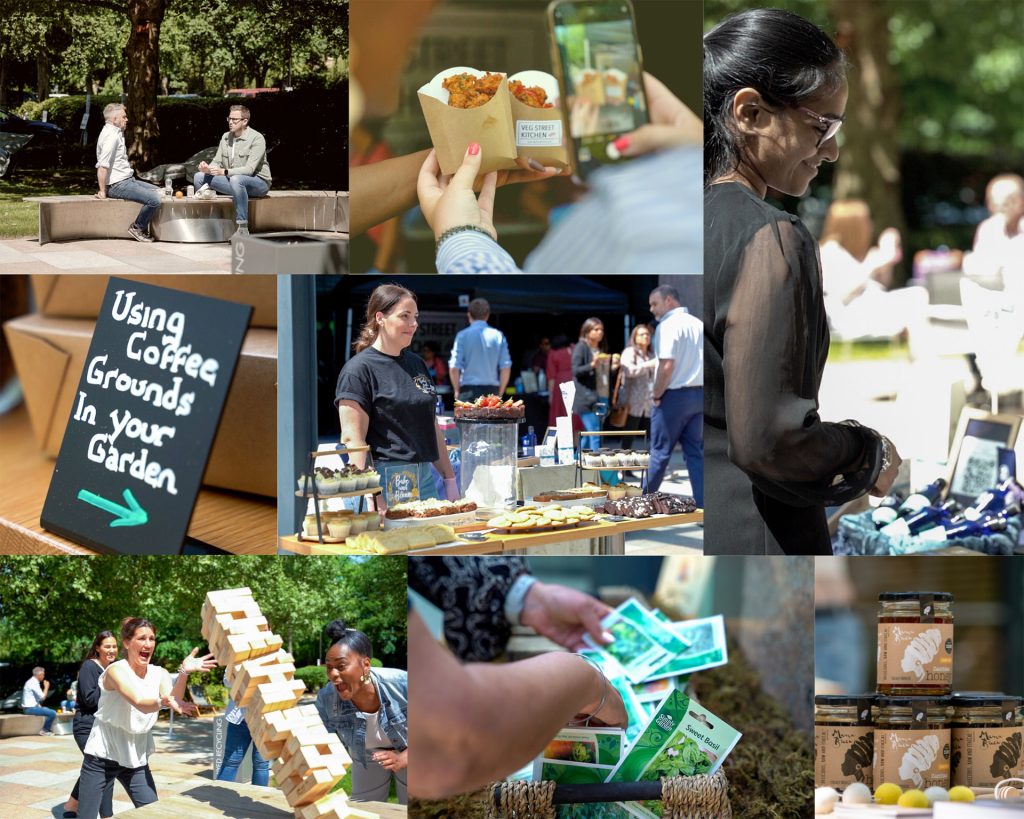
The quest for sustainability unites all who call planet Earth their home, so what better way to bring people together than a week of events focused on making ethical choices? Sustainability Week, specifically curated for the Welcome properties and their occupiers, gave teams the chance to come together and take part in fun events held across the portfolio of Welcome offices. It featured lunch-and-learns on topics such as recycling; hands-on tree-planting sessions, plus talks about gardening with free seed handouts at reception; a sustainably focused market day; and a drive to collect unused books and puzzles to raise funds for local charities. Activities also took place online, offering tips on how to be more eco-friendly, both at work and at home.
2. Invite the family

By inviting occupiers’ employees to include their family and friends, sites such as Skypark create successful well-attended events that bring people together through memorable shared experiences. The Skypark Summer Soirée, an event designed to welcome occupiers back to the office, featured live music, a DJ set, complimentary food and drink, and circus performers on-hand throughout the day to share their skills. For those looking to reconnect with colleagues, there was also the chance to book juggling and hula-hooping team-building workshops.
3. Are you listening?
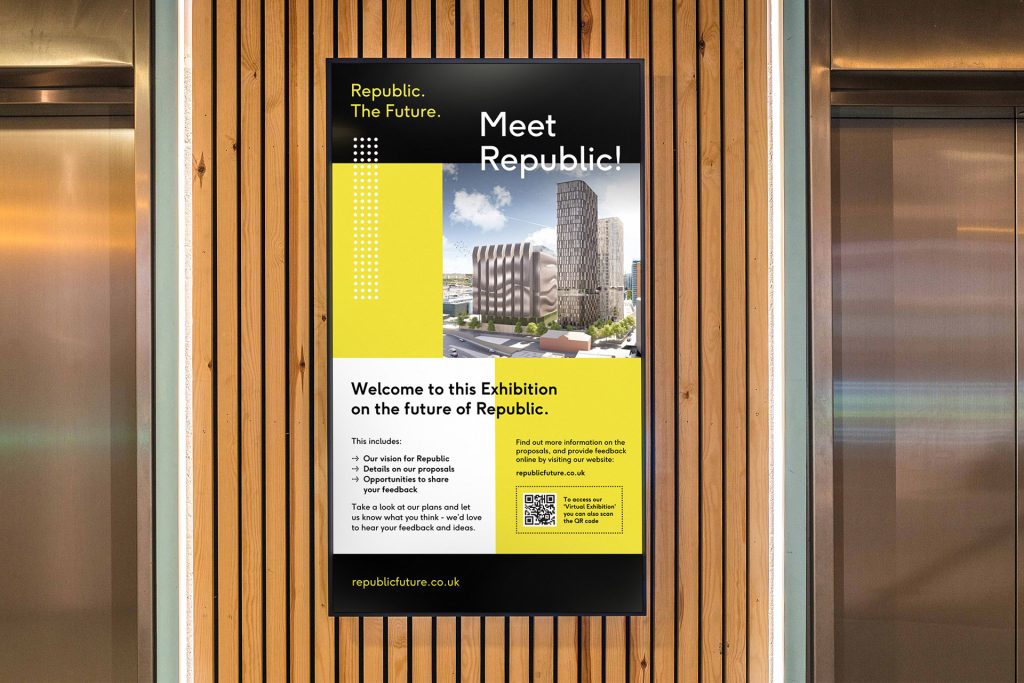
Proactive occupier engagement and feedback programmes for individual assets and their occupiers will reveal what’s required at each site. In some buildings, this may be the delivery of a social events programme, in others it may mean starting a running club. Only by listening to occupiers can property teams understand and deliver exactly what they want. One way to achieve this is to organise regular in-person feedback sessions, ranging from casual catch-up meetings to more formalised feedback sessions and occupier-needs-analysis surveys run by specialist researchers. Closer communication is also achieved through tech, such as the bespoke app and digital screens throughout campus offices such as Republic, which push out updates on upcoming events, for example.
4. Do it for charity

Across both retail and workspaces, charity events are a popular way to bring people together. At flagship Glasgow shopping centre Silverburn, a Dino Discovery trail featuring four life-sized dinosaurs and related activities held through the summer holidays not only gave families a free reason to visit; the event also raised £1500 for Glasgow Children’s Hospital. Meanwhile, at Birmingham Business Park, occupiers enjoyed games tournaments in advance of the Birmingham 2022 Commonwealth Games. Devised by the onsite Workman team as part of the ongoing calendar of workplace community building, the event raised funds for the property’s partner charity, British Heart Foundation. For a small donation to the BBP / BHF JustGiving page, employees took on games such as the egg and spoon race, basketball shoot, mini-golf, penalty shootout, table tennis tournaments and duck shoot.
5. Feed the world

What better way to deliver what occupiers want than by tantalising their taste buds? Lunchtime events featuring high-quality food are a sure-fire hit, especially at sites such as Breakspear Park with its 16 acres of outdoor space, ideal for al fresco dining. This summer the Hemel Hempstead business park offered employees from occupiers such as Britvic and Regus the chance to get out of their offices and into the sunshine with Grub + Groove, a programme of internationally themed food and music. As word spread, each week brought new faces, and sales increased progressively with an uplift of 50% in week three.
6. Pedal power

Tapping into fitness is a fun and functional way to bring employees together. Glasgow’s Skypark boasts state-of-the-art cycling facilities comprising 250 bike-parking spaces, e-bike charging points, 236 lockers, showers and changing facilities, a drying room, along with a dedicated cycle-repair space. It was awarded a Cycling Score Platinum rating for a best-in-class cycle-friendly infrastructure, the highest certification awarded by the assessor. The site’s outstanding commitment to cycling is underpinned by monthly “Dr Bike” sessions staffed by mechanics from the local Bike for Good Hub, including information on how employees can change their commute to work. There is also a regular tie up with Sustrans, the charity custodian of the National Cycle Network, which has created 12,763 miles of signed cycle routes throughout the UK.
7. Wellbeing wins
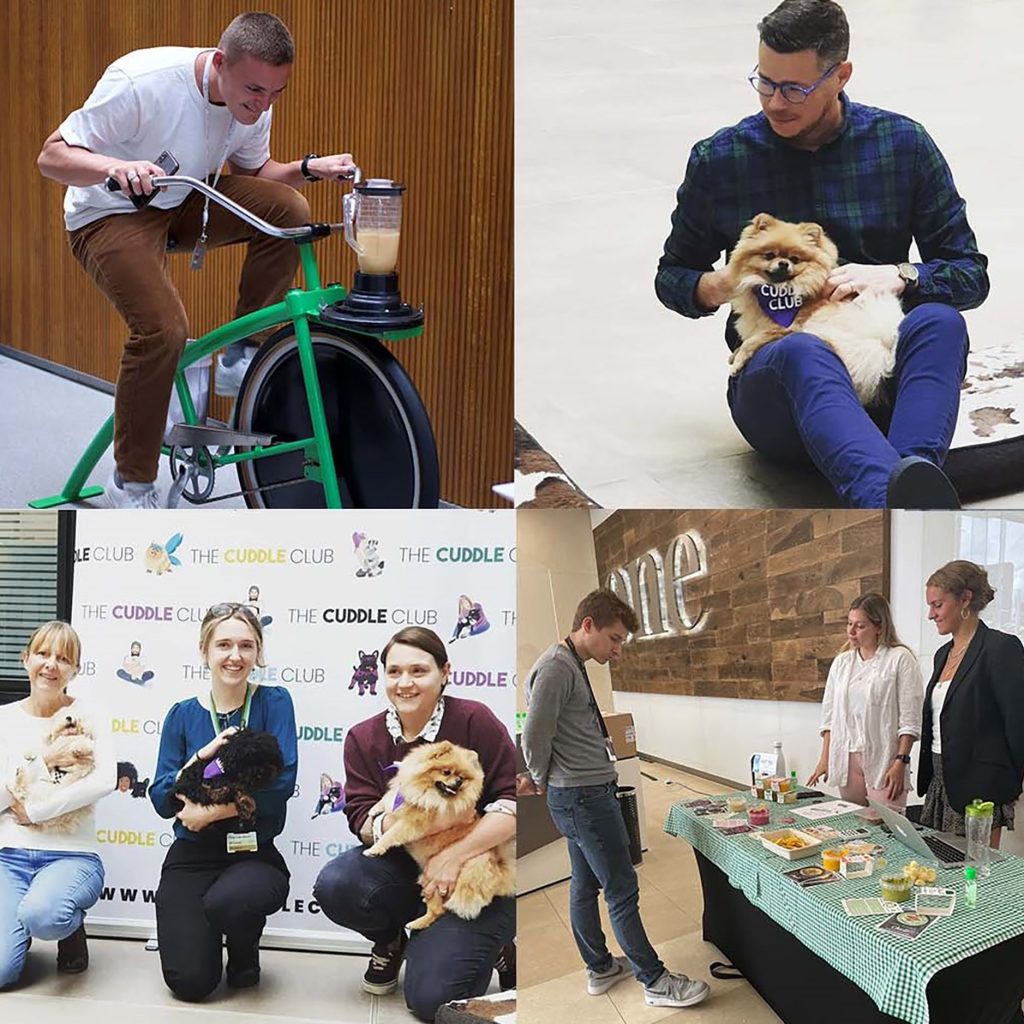
The value of health and wellbeing cannot be overstated – and is also vital for a productive workforce. The Wellbeing Week held across the Welcome portfolio of offices saw occupancy levels spike with an increase of 20%. Events included expert treatments and advice such as health checks and massage, nutritional offers, freebies, pop-ups and workshops, mindfulness activities such as meditation sessions, along with puppy-training classes, art classes and history walks.
8. People like us

The creation and execution of meaningful experiences for occupiers’ employees would not be possible without exceptional onsite teams who go the extra mile for their customers, and sometimes it’s the little things that make all the difference, as Welcome Community Manager Richard Price explains. One such initiative is the “Urban Emergency Kit” designed to help if an employee has an important meeting but ripped their tights on the journey to the office, or perhaps forgotten their phone charger. The initiative is emblematic of the quality of onsite teams who are trained to deliver hotel-quality concierge service levels. In the same vein, building managers and security staff across a range of Workman-managed properties have undergone Mental Health First-Aider training. This has been actively deployed on several occasions to the benefit of occupiers, supporting and reassuring them in cases where they may feel uncomfortable talking to their own colleagues.
Read more about our approach to Building Community across our managed portfolio.

How can property owners understand occupiers’ needs? Gathering tenant feedback is increasingly important in a world where landlords are more influenced by the satisfaction of their occupiers than ever before.
Monika Newton, Partner at Workman, asks Louise Freethy, Director and Chief Operating officer at customer experience consultancy RealService, about the value of asking occupiers what they want, and what this can achieve for investors.
![]()
Monika Newton, Partner, Workman ![]()
Louise Freethy, Director and Chief Operating officer at RealService
Monika: Why is it so important for landlords to get tenant feedback at their properties?
Louise: Successful real estate is not just about bricks and mortar – it is also about providing great service to customers. The future of the property industry lies within positioning landlords as property suppliers and occupiers as valued customers. The goal is for property owners to become like the big consumer brands: businesses with whom you’d positively want to do business. And the motive is not altruistic – it’s to drive the 3 R’s of real estate – revenue, retention and reputation. Customer experience and property performance must go hand in hand.
Monika: How can we be sure that our efforts to improve customer experience positively impacts financial performance for investors?
Louise: Danielle Sanderson, an Associate Professor at University College London, harnessed the RealService data from a 10-year period to investigate whether improving customer experience directly lifts the bottom line. She was testing the philosophy that improving customer experience, improves customer loyalty, thereby increasing retention and revenue, because loyal customers want to stay at these properties and continue to pay rent. Danielle also drew on financial data for specific buildings and businesses. Her findings showed that when customer experience improved by one point on the five-point Likhert Scale (excellent, good, average, poor, really poor), there was a 2% uplift in income, over and above what is spent on customer experience.
Monika: What sort of questions should be included?
Louise: No scheme is the same, and the approach to gathering tenant feedback should be bespoke. Questionnaires, compiled in partnership with a client, can cover issues ranging from the provision of amenities and their quality or cleanliness (lifts, reception areas, gardens, parking) to the quality of relationships with building managers, other staff, or landlords (communication, responsiveness, ease of leasing/maintenance processes, likelihood of lease renewal). While questions around current hot topics can be included, it’s best to work with a core set of future-proofed questions, so results and improvements can be compared year on year, while also including relevant additions like, for example questions around Covid response.
Monika: Is it possible to compare tenant feedback across different properties and landlords?
Louise: The Net Promoter Score (NPS) should always be included in questionnaires. This is the question: “On a scale of 0-10, would you recommend us to a friend or colleague?” and its follow-up: “Why / Why not?” The NPS is commonly used by just about every sector outside the property industry and is widely perceived as the leading benchmark for brand loyalty. As such, it is now being taken up by forward-thinking property companies including GPE, formerly known as Great Portland Estates, and the Crown Estate, both of which now publish their NPS.
It’s especially valuable to find out if current occupiers would recommend a particular property, and to be able to compare scores between schemes. Using the NPS, it’s possible for property owners to benchmark themselves within the property sector, but also outside the industry – to compare with the service delivery levels offered by Amazon or Singapore Airlines, for example. Subconsciously, today’s consumers are more and more likely to compare the service levels received across industries.
Data from certain questions also feeds into the RealService Index, which aggregates all responses from all clients over two years. So clients can see where they stand compared to their property industry peers. Of course, a high level of customer satisfaction – especially if this has been evaluated independently – would also be extremely good news for an investor, and this approach provides the investor / operator with a baseline view of all the core occupier experiences.
Monika: Why is it so important to speak to occupiers rather than sending out email surveys?
Louise: Collecting tenant feedback needs to be done in a systematic way, within a customer experience strategy. After a holiday, our founder Howard Morgan was asked to complete a 40-page internet survey which questioned every element of the trip in minute detail. It landed in his inbox the moment he departed and took the gloss off what had been an amazing experience. Participants should not be asked to work so hard: providing feedback should not be an onerous task. It should be simple and engaging and framed in a way that the participant believes their views are valued.
The feedback process should start with a mixture of email surveys and telephone interviews. For a baseline study, we contact at least 20% of the occupiers by phone. This allows everyone the chance to have their say while incorporating a deep-dive approach via phone calls, scheduled at the convenience of the respondent, and facilitated by an experienced interviewer. The five-point Likhert Scale will provide nuance but it’s important to get qualitative information as well as data. Email or text surveys can provide some detail, but a telephone interview or focus group is the best way of asking “why?” or “how can we improve”. The quality of that feedback sets it apart from email surveys, and it has the added benefit of further building the relationship between the occupier and the landlord by opening the dialogue.
Monika: Who should be questioned within the occupier organisation?
Louise: This varies according to the sector and the goal of the occupier research. For retail clients, we talk to those responsible for renting out the space in shopping centres, but we’re also doing site-level interviews where we talk to store managers around footfall, for example. In an office scenario, we might talk to office managers generally around what’s it like to be in the office, the amenities on offer, and we might talk to employees themselves around what it’s like working in that office, for example is there enough bike storage, and are the showers kept clean? Employees are an important audience at the moment. And for ESG issues, which are increasingly being included in our questionnaires, we might talk to sustainability managers. Or to answer questions on service charge levels, and expectations around the future use of space, we would talk to finance directors.
Monika: How should property owners and management teams act upon the results?
Louise: Firstly, don’t be afraid of challenging answers. There’s no point asking questions which only elicit a positive response. Many property owners do this research annually and of course they like to hear the good stuff, but the great ones act very quickly on any areas that need improving. They are monitoring their NPS, they are very actively involved, and their whole business is customer centric. If the results are negative, there are action plans and training that can be put into place, and then hopefully, when they do another survey in 12 months’ time they see that some or all of those issues have been resolved.
Monika: Do some property owners only survey their occupiers as part of a GRESB box-ticking exercise?
Louise: The ESG benchmarking organisation GRESB requires tenant engagement as part of its scoring system. RealService is a GRESB partner, and we helped them pose the right set of questions on occupier feedback. A cynic might say that some property owners only collect occupier feedback in order to collect GRESB points, but we do our best to persuade them that there’s a very strong financial business performance reason for doing it, rather than just ticking a box.
Read more about how we are Building Community across our managed portfolio.

The value of occupier experience and building community are key factors in attracting and retaining occupiers, often uniting landlords, occupiers, and property managers in a common quest: the creation of community within commercial buildings. We hear from one of the long-term occupiers at the Workman-managed Westside campus in Hemel Hempstead, along with its asset manager.
View from the occupier: James Wilkinson, Operations Director, Europe, DAI

“The engagement strategy at Westside and the community it creates was part of the reason we moved into this building when it was refurbished six years ago. We wanted to be with other people, to interact, and that gives us a reason to be here beyond the bricks and mortar.
Now, post-pandemic, it’s important to us to get people back into the office. Because we are purely about knowledge management, our work happens best when people come together. We need to attract them out of their homes and make the office a worthwhile destination.
At Westside, people can get their dry cleaning, beauty treatments, coffee, lunch – so it’s not just about being at work – they take care of life admin too. But more meaningful than that is the social factor, which is making a huge difference in getting people in. On days when there is something going on at Westside, our attendance figures go up, and other businesses based here have noted the same.
The recent Sustainability Week organised by the Welcome team struck a chord with all of us, because sustainability is a big part of what we deliver as a company. Our environmental team had some input to help shape the event, and we encouraged our employees to come in. People wanted to support the events, to see what was going on, and to talk to other people. It was fantastic to see people sitting together, chatting, smiling and playing giant Jenga.
The events here mean that people from different businesses get to know each other, and it becomes a wider community. Working relationships and friendships have been built up, and now people from different companies meet for a coffee, have a chat and share ideas.
Equally, when the Wellbeing Week was held, our employees were keen to join in the activities, especially the puppy training classes. People are also enthusiastic about supporting Westside’s adopted local charity Dacorum Emergency Night Shelter (DENS), and we have adopted the same charity. We run joint fundraising events which are well supported, such as last year’s sleep out.
Having a collective cause that we’re all part of is a great reason to bring people together, and it makes a difference that it’s local. Similarly, our Christmas market hosts local suppliers, which people love, and some of our employees have also sold their products or services including homemade candles and yoga classes at events here. It’s supporting this building’s community, and also the community around us.
There are regular formal meetings with the property management team, but there is also constant informal communication. For example, some of our employees recently raised concerns about the range and quality of food on offer at the onsite café, so the team here arranged for a survey to be carried out among all the occupiers, and for the café operator to come in and listen to the findings. The café has since made changes according to the feedback.
It makes the place feel very collaborative, and we know that we’re not just a tenant account. We don’t have to send an email, we can just talk face to face, and they actively engage with us. Here, the receptionist knows who we are and chats with us every day. It makes our working lives so much easier when we’re on a first-name basis with the people who provide the services.”
View from the asset manager: Charlie Seaton, Head of Asset Management, Roebuck

“In the post-pandemic world, the importance of creating a culture of community within commercial buildings has taken on new significance as employers rise to the major challenge of attracting their staff back into the office.
Today’s workers demand flexibility, and this has resulted in a hybrid system of working. However, I am a great believer in the benefits of the office for a sense of community, workforce camaraderie, training, and information sharing – all of which can only be achieved in a collaborative office environment. Owners and managers of out-of-town campuses such as Westside can assist with the repopulation of the office by delivering community-led initiatives that cannot be enjoyed while working from home.
Of course, creating a sense of community alone is unlikely to change the dial in terms of working habits, but done efficiently and consistently, it certainly helps. Workman’s onsite property management team at Westside has done a brilliant job with these initiatives and has helped Westside continue to be a vibrant place to work in the aftermath of the pandemic-driven re-evaluation of the purpose and use of the office. The management team ensures that the voices of the occupiers and their employees is well represented. Plus, there are lots of varied initiatives promoting community, sustainability, and awareness; and the introduction of on-site amenities such as dry cleaning and car valeting gives busy people some of their precious time back.
Engagement programmes are an increasingly important attraction factor for occupiers who are looking to re-locate, especially since these employers have the advantage of choice in a market that is becoming over supplied. ESG is a key factor in attracting and retaining occupiers. Within this, social interaction with peers and other tenants forms an important role. In a world where flexibility has become the main driver in people’s working lives, the office needs to be more than just somewhere to go to work in order to attract the workforce back in more meaningful volumes.
It is clear that occupiers who become part of a community at workplaces such as Westside are more likely to stay put for longer. The office must become more meaningful than just a place to conduct business. It needs to be a community, thriving on social interaction, collaboration, and activity that can’t be replicated remotely.
But ultimately, occupier retention is difficult to pin down. The role of the office has been under intense scrutiny because of the change in working habits and unpredictable levels of re-occupation post-pandemic. The result has seen downsizing and consolidation of occupational portfolios. However, locations like Westside, which work hard to become destinations offering a healthy environment to work in and an excellent management team promoting a sense of place, will perform better than the majority over the medium term.”
Read more about how we are Building Community within our managed portfolio.

Do tenant engagement apps really enhance the occupier experience? Or are property managers jumping on the tech bandwagon for its own sake, only to find end users within workplace communities are underwhelmed?
For building technology like tenant engagement apps to become truly integrated in occupiers’ lives, it must pass the “toothbrush test”, explains Eleanor Newton, Senior Associate at Workman. “It has to be so essential to the user’s experience of the building that people absolutely have to download the app, and critically, that they have to use it at least twice a day,” she says.
At Republic, spread over four buildings comprising 720,000 sq. ft of office, educational and retail space, the app generates a QR code for users to enter the building, much like an airport boarding pass. Meeting rooms are bookable via the app, which can filter appropriate spaces according to the date and number of guests. Visitor management is also taken care of – but here only employees who have certain privileges set up on the app can register visitors, who then receive QR codes providing access to limited areas of the building, along with directions via direct emails generated automatically through the app.
Uniquely, Republic’s occupiers are a mix of universities and education providers, and financial businesses. At certain times of the year, such as September when new cohorts of students arrive, there is a pinch point which previously meant that security personnel were overstretched producing entry passes for thousands of enrolling students.
“Printing access control passes, even working around the clock, would take a couple of weeks, whereas with the QR codes, university administration staff will be able to upload the new joiners’ information directly onto the app in bulk, which will generate the QR codes simultaneously, meaning far greater efficiency,” says Eleanor.
Transactions for beauty and health services booked in the onsite treatment room, are dealt with via the Stripe payment system, also accessible via the app, but with payment going directly to the independent retailers. In addition, the app delivers information on upcoming events, discounts for local and onsite businesses, live travel and calendar updates, as well as providing a repository for the building handbook, fire muster points, and risk assessments, which are all accessible only to office managers.
A future additional development for the Republic app will be the capacity for occupier satisfaction surveys, along with incentives for completion, a further way in which technology can help improve occupier engagement when used effectively.
Tenant engagement apps – no one size fits all

Having parted ways with a previous app that was introduced at Republic, the onsite team is well-aware that choosing the correct app for each building is key; recognising that different buildings require different service levels and have a variety of budgets available. The new Republic app, developed according to the needs of the site and tailored to its occupiers, has been rigorously tested before being rolled out to end users.
“In cases where we are creating a bespoke app for a particular building and its occupiers, the key to success is down to very regular meetings with the developers – and closely mapping out what you want from the app. There is a lot of involvement required from front-of-house and facilities management teams as well as property managers to make it work,” says Eleanor.
Conversely, an off-the-shelf app has been selected for One Stratford Place, which can deliver the requirements of both landlord and occupier at a fraction of the cost of a bespoke product. For this building, which is significantly smaller and with fewer bookable amenities such as treatment and meeting rooms, the simpler product meets the occupiers’ needs but also the client’s budget.
And striking the balance between the two is the Park Life app at Breakspear Park, which does not go as far as access control provision, but allows users to access information about an array of benefits, amenities, and news updates, as well as fitness studio membership, and food purchases. Everything around occupier experience is driven via the app, which reinforces the sense that this is an exclusive community. And in terms of attracting new occupiers, the app is seen as a benefit.
“We never roll out a tenant engagement app just because it’s working in one building. We always assess needs and requirements on a case-by-case basis, and select a supplier accordingly,” Eleanor says.
At Republic, information is also displayed via digital signage displays and directory boards. This bespoke digital communications platform helps Republic support its community and sustainability programmes, as well as providing key features such as hyper-local weather and DLR departures for the two closest platforms, East India and Blackwall.
“We control 100% of the content on the digital screens. Every member of the onsite team has been photographed and there’s a story about each of them on the reel, to raise their profiles and visibility among occupiers’ employees. We can also communicate waste data and recycling statistics on the screens, as well as sustainability messages such as the impact of leaving monitors on overnight. And once we have indoor air quality data from the IBOS system, we will be putting that onto the screens too,” explains Eleanor. “We have seen that occupiers like having direct access to information that they would otherwise have to request via email.”
The rules of engagement
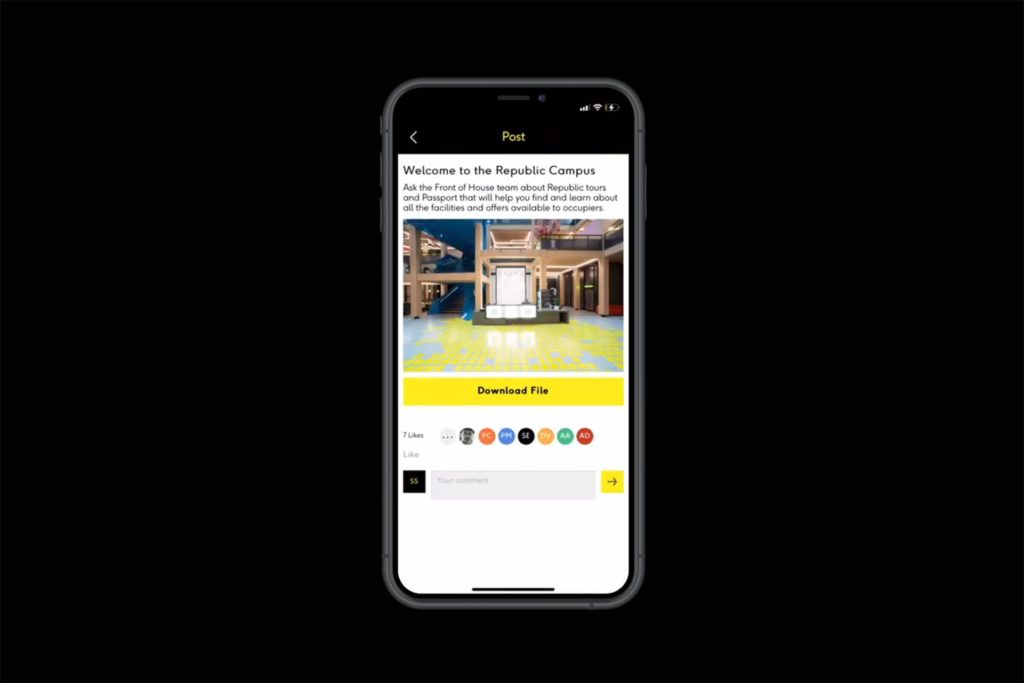
Whether it’s a bespoke app for a multi-occupier campus office, or a simple off-the-shelf product, the key is that the technology is only as good as the onsite teams running the building. The front-of-house, facilities and property management teams must be engaged in making sure the information on the app stays relevant and up to date. It is vital to pinpoint what makes the app most beneficial to users, and what works in the best way for them.
In short, no matter how sophisticated the technology, it’s nothing without consideration of occupier needs, effective implementation, and close engagement with occupiers to encourage usage.
Can tenant engagement apps enhance the occupier experience? Not unless it has the right team behind it.
Read more about our approach to Building Community across our managed portfolio.

How to make places help people to generate social value? Linking up with local councils, schools, and social enterprises can embed commercial property in the local area, helping buildings contribute to vibrant communities.
Sustainability does not begin and end with carbon reduction. The “S” of ESG – Social – has a huge role to play. The buildings in which people work, play, and shop define and shape their neighbourhoods, especially in cities, where they can have an enormous social impact upon communities. So how can investors and property managers ensure assets benefit both occupiers’ employees and the communities that surround them?
What is social value?
Creating social value involves engaging communities both within and around a development. When buildings support environmental, economic, and social wellbeing, they improve the quality of life of people using them by providing access to services and integration into the wider economy and society. Across the Workman-managed portfolio, our strategies are specifically designed to engage occupiers and visitors, to draw in the local community, and make buildings a part of the local community.
Great Northern: creating spaces that people fall in love with
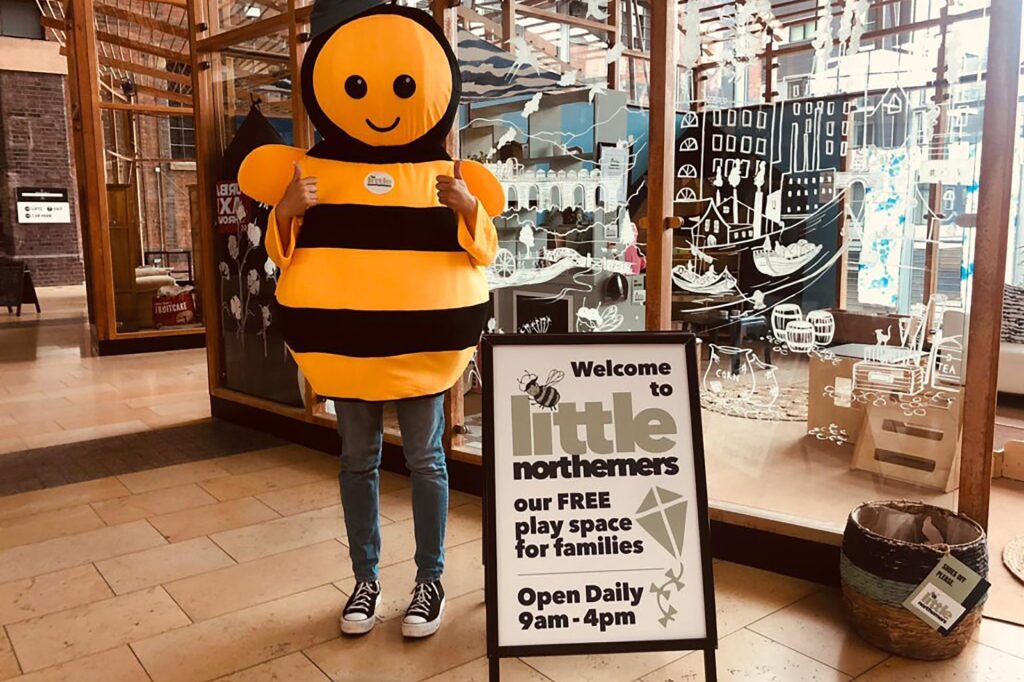
Located in the heart of Manchester city centre, Great Northern is a mixed-use site, home to a cinema, bowling, restaurants, bars, entertainment venues, shops, and public square. It takes its role as part of a wider community seriously, offering services to local businesses and residential areas neighbouring the site.
A new space, “The Village Hall”, is open to any business on site for meetings and training sessions. The Workman team holds meetings in the space, and it is used by community groups such as a female choir group, and a parents-and-tots group.
Separately, “Little Northerners” is fitted out as a free space for families aimed at pre-school children for active and constructive play with a dolls house, a tepee, and construction blocks. Once a week, the space is hosted by a Play Facilitator. This is next door to the “Book Nook”, a free book-swap library run by volunteers from neighbouring residential block Great Northern Tower and from Manchester University, who organise and alphabetise the books. The space is used throughout the day, with a turnover of 1000+ books per month.
Outdoors, a public amphitheatre area has been created in the square at the front of the site. For summer, this was transformed into a giant sandpit with 50 tonnes of play sand, buckets and spades, and a large, wooden structured playhouse, free to use at any time of the day. A Forest Tots practitioner runs free weekly play sessions, which see children pour into the area, accompanied by parents and grandparents observing from surrounding picnic tables and seating areas.
Owners Trilogy and Peterson Group were originally granted planning consent to develop the warehouse into apartments, but reassessed plans following the pandemic, so official redevelopment of the site has yet to begin. In the meantime, the use of the space – much of which has developed organically – has informed the future development plans. Many popular community initiatives will be carried forward as part of this new neighbourhood within city centre Manchester, as the site will retain its public realm areas alongside private residents-only or office-work-only areas.
Touchwood: reaching out to schools
Touchwood, the prime Solihull shopping centre, which features 80+ stores – including John Lewis – plus 20 bars & restaurants and a Cineworld cinema, was created to provide an environment that not only extended the retail, commercial and leisure offer of the town, but also integrated into the existing fabric of the area. The centre is owned by US real estate investment firm, The Ardent Companies and managed by Workman, whose onsite property management team regularly consults with community partners to run initiatives that involve, attract, and support the local community.

It has developed strong ties with local schools, most recently working in conjunction with Solihull Council to run a competition where local schools were invited to create a flag for their chosen Commonwealth country made of entirely recycled material. The 16 flags then featured as a trail around the centre, with visitors answering quiz questions as they identified each flag. The centre has also fostered links with a local special needs school, with three students attending each week to do work experience. One has since been employed as part of the centre’s housekeeping team.
Republic: collaborating with charities
A next-generation office and education campus spread over four buildings comprising 650,000 sq. ft of office and retail space, Republic is at the forefront of East London’s commercial and cultural regeneration. Brought on board by Trilogy Real Estate and fund manager LaSalle Investment Management, Workman’s role is to manage the property effectively, while also helping it become a part of the local community.
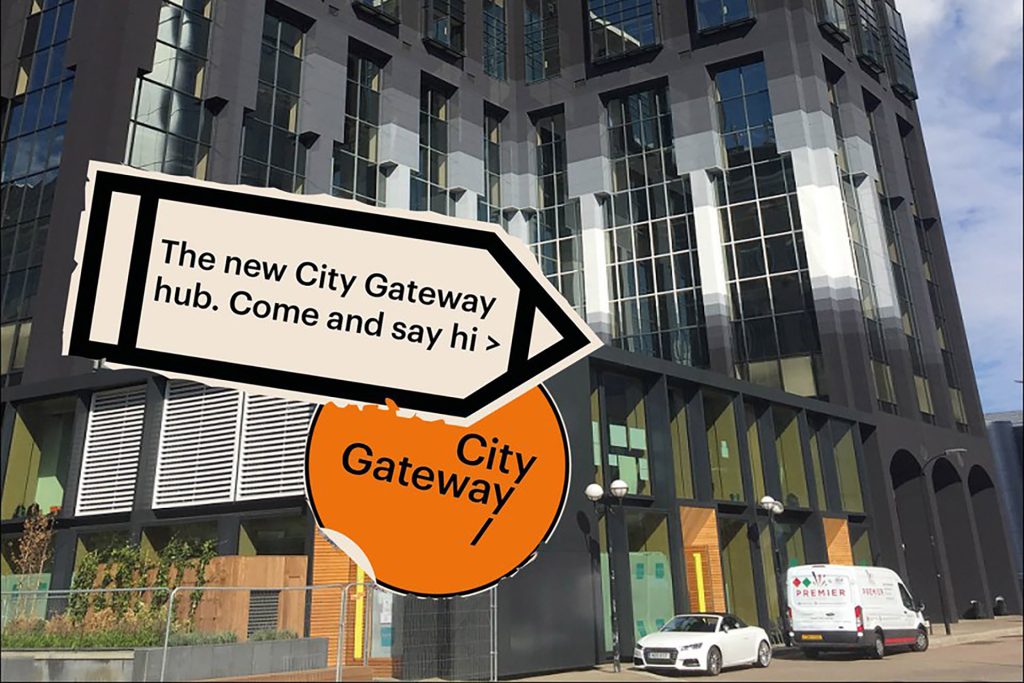
Its proximity to both the affluence of Canary Wharf, and Tower Hamlets where more than half of all children wake up in poverty, makes it an ideal base for City Gateway, a charity which provides education and opportunities to young people from disadvantaged backgrounds, along with volunteering opportunities for corporate partners. The charity provides support services, training courses, Traineeships and Apprenticeships for young people, readying them for the workplace. Through a network of placements with world-leading employers, City Gateway provides opportunities for employment at Canary Wharf, Republic and beyond. Indeed, Welcome has already facilitated several Apprenticeship schemes within the Republic campus.

The site is also home to a female-run social enterprise café called Tati, serving Bengali fare. Supported by not-for-profit Oitij-jo Collecti, with backing from the Mayor of London and other partners, the women obtained hygiene certificates, worked in professional kitchens, chosen the café décor, and developed front-of-house skills, before selling meals to Republic occupiers on a weekly basis.
Silverburn: cleaning up the community
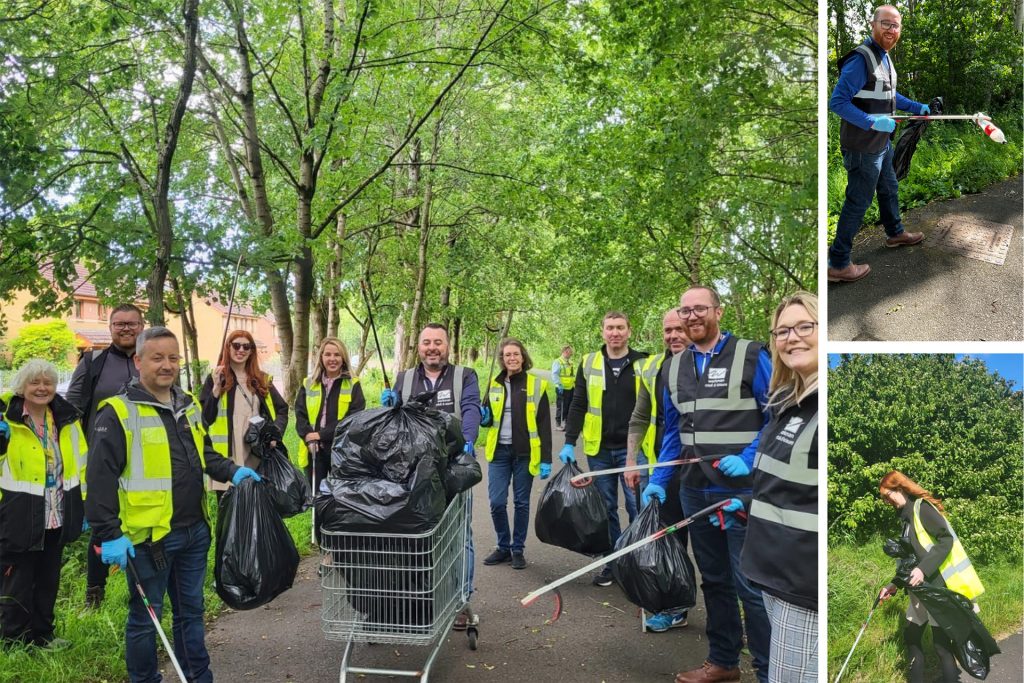
As part of environmental and community outreach work at Silverburn, Glasgow’s flagship shopping centre, the Workman property management team joins the quarterly litter pick in residential areas surrounding the 1,500,000 sq. ft site. Organised in conjunction with Glasgow City Council, the most recent effort took place on a clear sunny day and resulted in a big pile of rubbish collected by an enthusiastic team of volunteers. Since opening in 2007, Silverburn has historically generated consistently high footfall of 15 million people per year, boasting one of the highest average spends-per-visit thanks to affluent catchment areas such as Newton Mearns, Clarkston and Giffnock. With 125 retail and leisure units, the centre, owned by Eurofund and Henderson Park, is currently 80% occupied.
Further efforts to give back to the local community come in the form of official digital sponsorship of the Open Goal Broomhill FC football team. Always looking for creative ways to engage with its audience and customers, this partnership for the upcoming Lowland League season builds on an already established involvement with the team, including hosting its Keeping the Ball on the Ground show at Silverburn in 2019. This latest collaboration between Silverburn and the football club also draws in the Open Goal podcast team, who will film their popular football-dedicated podcast at the centre.
Read more about our approach to Building Community across our managed portfolio.
When it comes to sustainability, at Workman we believe that actions speak louder than words. As such, we are keen to share ways to move towards eco-friendly lifestyles with occupiers across our managed portfolio.
This week, our Welcome team launched its own Sustainability Week, featuring activities and events for various properties – taking place both online and onsite – to offer tips and tools on how to be more eco-friendly, both at work and at home.
The timetable of sessions, specifically curated for the Welcome properties and their occupiers, gave teams and communities the chance to come together and take part in fun events – all focused on making ethical choices that deliver a safe and comfortable future to everyone.
Welcome’s Sustainability Week featured a lunch-and-learn with Paper Round to discover where all that recycling really goes; a hands-on session from Gardening with Curtis to plant a cherry tree in the workplace grounds, plus talks about planting herbs with free seed handouts at reception; a sustainably focused market day showcasing retailers such as Eco Bonobo and Neal’s Yard; and a drive to collect unused books and puzzles to raise funds for local charities.
At Workman, we’re doing all we can to help our occupiers and their staff enjoy their workplace in sustainable ways. Employees at Westside, Hemel Hempstead, appreciated the activities and events, with many taking advantage of the week’s fine weather to catch up with colleagues while learning about more sustainable lifestyles.
Morgan Capital, on behalf of AOG Real Estate, has selected Welcome to manage three office buildings in the heart of the City, totalling circa 120,000 sq. ft, including a mix of retail and food and beverage operators on the ground floors.
The new appointments, at: 45 Cannon Street (pictured), 10-13 Bow Lane and 25 Watling Street, are testament to the growing relationship between Morgan Capital and Workman, which already manages six buildings on behalf of the specialist Central London asset and development manager.
The assets will be managed by Workman’s Welcome team, led by Monika Newton, Partner, from their offices at 80 Cheapside, in close proximity to all three assets. Notably, 25 Watling Street is home to Morgan Capital’s own head office, while other occupiers include DWS, the global asset manager, and Global Relay.
Focusing on occupier experience and excellent communication at each of the assets to enhance customer satisfaction will be at the core of Welcome’s service strategy.
Nick Grosse, Partner at Morgan Capital, said: “We are excited to work with the Welcome team who we firmly believe will go the extra mile that our tenants deserve, and rightly expect. From a strategic and operational standpoint, the move to consolidate our asset management portfolio under the care of a single managing agent will enhance our offer by creating efficiencies in communication, transparency and accountability.”
Monika Newton, Partner at Welcome, said: “We’re delighted to have been awarded the management of these assets. Customer experience and occupier engagement form the foundation of our Welcome service. Despite current circumstances, it has never been more important to establish locations where occupants will feel part of thriving communities, within environments that deliver wellbeing and sustainability long into the future.”
The Welcome team, which works with a growing portfolio of clients, manages more than five million square feet of prime office space in the City of London.
As part of its continued growth, Welcome has recently recruited Edward Gidney as Senior Surveyor, and Michelle Masalonga as Associate.
This story originally appeared in:

